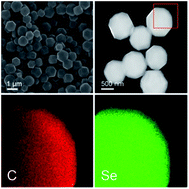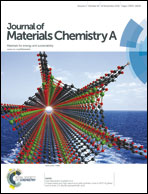A selenium-confined microporous carbon cathode for ultrastable lithium–selenium batteries†
Abstract
A novel selenium–carbon composite has been fabricated by embedding selenium in metal–organic framework-derived microporous carbon polyhedra. Such interconnected microporous carbon polyhedra possess a large surface area and pore volume to effectively confine Se, and suppress the dissolution of polyselenides in the electrolyte. This selenium–carbon composite shows ultrastable cycling performance when used as a cathode material for lithium–selenium batteries.


 Please wait while we load your content...
Please wait while we load your content...